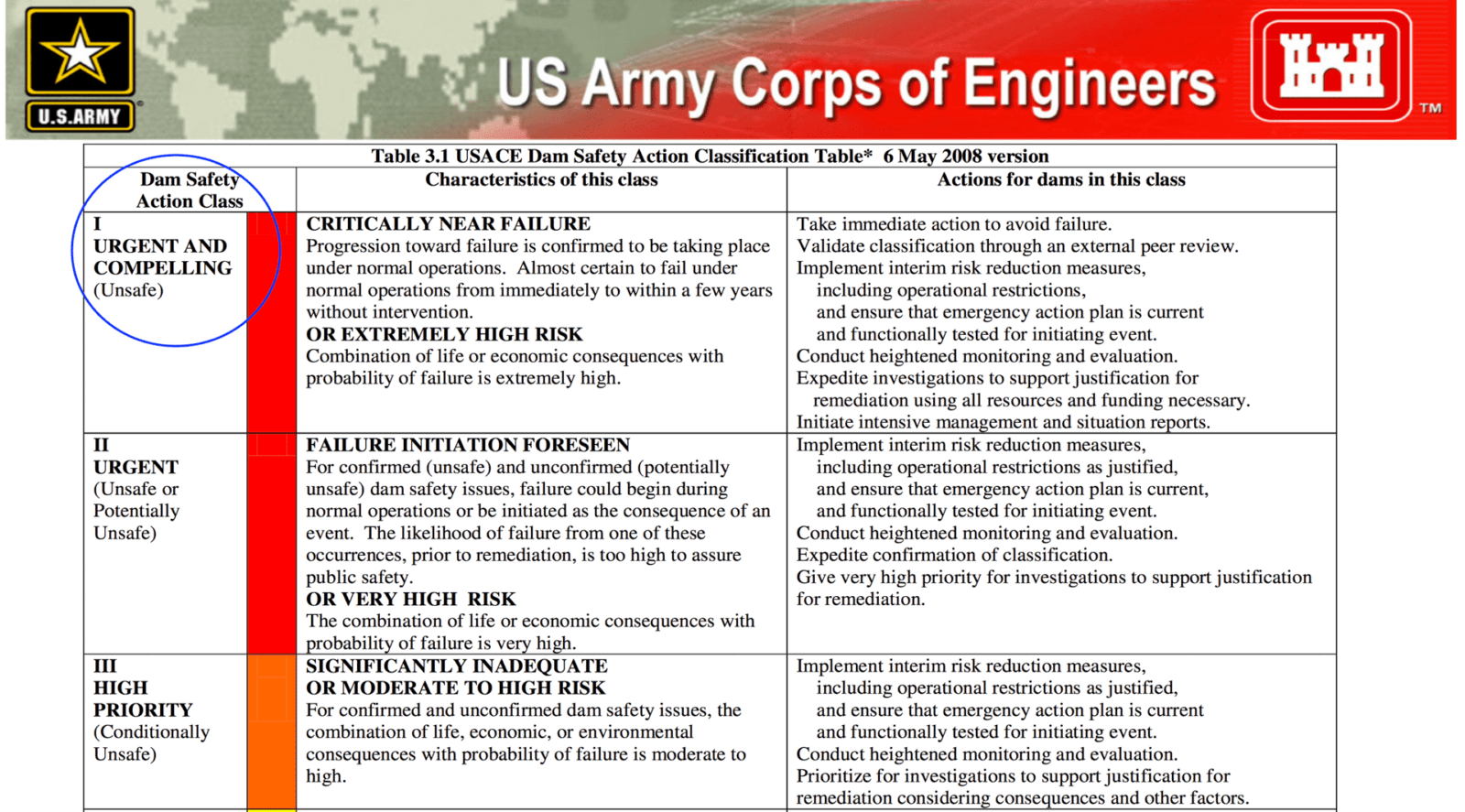
1963: Army Corps of Engineers Makes Changes to Addicks & Barker Reservoirs’ Operating Procedures
Built in the 1940s after cataclysmic floods devastated Houston in 1929 and 1935, the Addicks and Barker Reservoirs collect and store rainwater during major storm events. Once the storm passes, the stored water is slowly released from the reservoirs into Buffalo Bayou.
In 1963, however, the Army Corps of Engineers made several changes to the reservoirs’ design and operations, which limited the releases to no more than 4,000 cubic feet per second (cfs) and extended the time it took to drain the reservoirs (after a storm) from days to months.
2010: Corps of Engineers Reclassifies Addicks and Barker Reservoirs as “Dam Safety Action Class 1 – Urgent and Compelling (Unsafe)
Concerned that the substantial development that had taken place around the reservoirs would increase runoff and flood risks downstream, the Army Corps of Engineers conducted a safety study in 2010 that revealed the Addicks and Barker Reservoirs were at imminent risk of failing.
As a result, the reservoirs were reclassified as “Dam Safety Action Classification Level 1 –Urgent and Compelling,” a classification limited to less than 10 of the more than 300 dams in the United States.
“This classification is for those dams where progression toward failure is confirmed to be taking place under normal operations and the dam is almost certain to fail under normal operations within a few years without intervention.”
Rather than correcting the deficiencies, however, the Corps decided to continue to operate the dams with several operational changes that—7 years later—would contribute to the flooding of over 4,000 businesses and homes during Hurricane Harvey.
The changes, which were part of the “Interim Reservoir Control Action Plan,” represented a significant departure from the way the dams had been operated over the previous 40 years.
One of the key changes involved raising the “allowed combined flow limit (including local runoff) at the downstream regulating gauge in [West Houston/Piney Point] from 2,000 cfs to 4,000 cfs.”
The Corps made these changes knowing that they would substantially increase the risk of flooding in businesses and homes in West Houston:
“Homes in the vicinity of the West Beltway Bridge . . . [experience] inundation at discharges of 2,500 cfs and above.”
“At flows greater than 4,100 cfs, a large percentage of the structures located between the bridges over Buffalo Bayou at North Wilcrest Drive (approximately 5 miles downstream of the reservoirs) and Chimney Rock Road (approximately 16 miles downstream of the reservoirs) will experience flooding.”
August 29, 2017: Army Corps of Engineers Increases Releases from Addicks and Barker Reservoirs to Over 13,000 Cubic Feet Per Second
After making landfall near Rockport, Texas on August 25, 2017, Hurricane Harvey remained virtually stationary over Houston for 5 days, causing some parts of the city to receive up to 50 inches of rain.
On August 28th, the Army Corps of Engineers and the Harris County Flood Control District began a series of controlled releases to protect the dams from the same deficiencies that, in the Army’s words, made them “almost certain to fail under normal operations.”
Those deficiencies, however, were never corrected, leading the Corps of Engineers to increase the discharges into Buffalo Bayou to over 13,000 cfs — over 3 times the release rate that the Corps stated would cause flooding in “a large percentage of the structures between North Wilcrest Drive and Chimney Rock Road” just 7 years earlier.
The Corps’ predictions were correct: over 4,000 businesses and homes along the Buffalo Bayou that hadn’t flooded during Harvey were inundated and, in some cases, completely submerged.
If Your Home or Business Flooded Due to the Addicks & Barker Reservoir Releases, the Government May Owe You Money. Call 1-888-603-3636 or Click Here For a Free Consult with Our Undefeated Flood Damage Lawyers.
With more than $1 billion won for our clients—including hundreds of business and homeowners who suffered flood and wind damage during hurricanes and other catastrophic storms—our Undefeated Hurricane and Flood Damage Attorneys have the resources and experience needed to help you and your family rebuild your future and recover what you’ve lost.
We’ll answer your questions, explain your rights and legal options, and provide you with the information you need to determine the best course of action for you and your family moving forward.
All consultations are free, and because we work on a contingency-fee basis, you won’t pay us anything unless we win your case.
Call 1-888-603-3636 or Click Here to submit a confidential email using our “Contact Us” form.